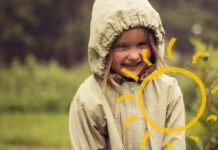Jőulud (Yuletide), Christmas Eve and Christmas Day
In the folk tradition of Estonia Christmas has a double meaning: on one hand it is the sign of the birth of Christ, but on the other hand it represents the whole period of holidays celebrated in mid-winter – Jõulud. This name has old Scandinavian roots and comes from the word Jul, which has no connection to Christianity.
It is an interesting fact that only in Scandinavia, Great Britain and Estonia a word of pre-Christian origin – Jõulud is used to speak about Christmas. In southern Estonia, another name, talvistepüha (Winter Feast) is also used. It is thought that this name is a direct influence of Estonia’s southern neighbor Latvia, where Christmas is known as Ziemas svetki (Winter Feast).
The holidays fall on a period of winter solstice, when the day is the shortest and the night the longest in a year. According to folk tradition, during that time, the sun lay in a nest and the coming of the day was celebrated as the birth of Sun. Starting on that day, the sun rose higher and higher.
In pre-Christian times, celebration began on the 21st of December (The Feast of St. Thomas). With Christianization, pagan customs intertwined with Christian traditions, and the names of pagan holidays were adopted by Christians.
People began preparing special dishes, the brewing of beer began, and the house was thoroughly cleaned. At that time special crowns were hung from the ceiling and straw was spread on the floor. Despite its connection with the biblical story of the birth of Christ, the tradition of Christmas straw may come from pre-Christian times. In Estonia straw (sometimes also hay) was brought into the house for the whole holiday period. Furthermore the last bundle of corn cut during harvest was brought into the house. In time of Yuletide many games were played on straw. One tradition dealt with predicting if the future harvest will be good. Straw was thrown in the direction of the ceiling and the more of it hung on the perch the better the harvest would be.
According to tradition all work outside the house had to be finished before Christmas Eve. Pigs had already been slaughtered and beer had been brewed. Milling, spinning, geese plucking or horse-back riding were forbidden since they made a lot of noise and could disturb friendly spirits.
During Christmas Eve several meals were eaten to ensure oneself plenty of food for the upcoming year. The table was not cleaned for the night, and all the dishes were left on it so that the spirits of the dead could celebrate the holidays. It was expected that they would show up in the same place which they inhabited while alive. The fire in the furnace was kept going through the whole night. All the curtains were drawn so that the fire’s light wouldn’t hurt the new-grown crops. The sign of the cross was also placed upon the door to protect the home from wicked spirits. On Christmas Eve night animals were also fed bread.
Christmas Eve night was also a time of fortune-telling. Based on the stars and frost next year’s weather was predicted. The size of the harvest in the upcoming year was also foretold.
The Christmas holidays in the peasant communities in inner Estonia differed greatly from the holidays of the fishermen communities from the coast. Christmas Day and Christmas Eve were traditional domestic holidays. Starting on December 26th relatives, friends, and neighbors were visited. On the night of December 27th Christmas was „sent away”. This time was often spent having fun in the local taverns. The time until December 30th was known as „half-holidays” – work was avoided. People visited each other and had a lot of fun.
New Year
New Year’s Day became an official holiday in 1691. Its Estonian name näärid comes from the German (Neujahr – pronounced as ni jar – which means New Year), and earlier was used in the singular näär which meant the particular 1st of January during a particular year. New Year’s Day fell right in the middle of Yuletide, right after Christmas and that is why it became known as the Second Christmas. New Year’s customs were similar to Christmas Eve customs but they were more playful and less serious in their nature. Fortune-telling once again took place. One’s fortune in the upcoming was predicted by pouring of wax into water. The chance of a young woman to get married was predicted by giving corn to roosters. The rooster was then observed to see which grain it would eat first. The augury with a dog and bone worked in the same way. On New Year’s Day people visited one another to wish one another all the best. If the first well-wisher was a man it meant that the whole household would prosper in the upcoming year, if it was a woman it was read as a bad omen. In some parts of the country such women were forced to tie men’s boots to their necks, or ash was thrown at them. If there were stars in the sky on New Year’s Eve it meant fertility for domestic animals, and if the forest was covered in frost it promised a good harvest in the upcoming year. Throughout Estonia there exists a belief that the way something is done on New Year’s Day, is the same way it will be done throughout the year.
Feast of the Three Kings
On the last day of the Yuletide – Three Kings Day – people went from farmhouse to farmhouse to have fun together – play Yuletide games, drink beer, and finish eating Christmas Eve dishes. Straw was taken out of the house and spinning wheels were brought in. On the islands and on the coast Yuletide ended on the Feast of St. Knud (January 7th or 12th). On that day only men could work and their only task was to go from farmhouse to farmhouse and chase away the Yuletide holiday with whips made of straw (Estonians call the day of St. Knud nuudipäev, which means „the day of the whip”). In addition men could drink beer and take clutches from beer barrels with them.
Presently
At the present pagan and old traditions can be seen during festivals and exhibitions were magic and mysticism mix with spiritual and sacral elements.
Translator: Szczepan Witaszek






